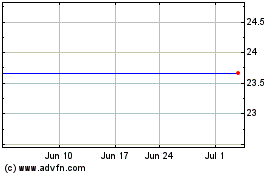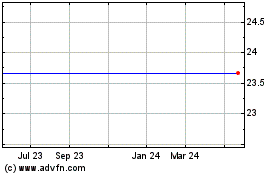4th UPDATE: Southwest Airlines To Buy Discount Rival AirTran
September 27 2010 - 12:25PM
Dow Jones News
Southwest Airlines Co. (LUV) on Monday announced plans to buy
discount rival AirTran Holdings Inc. (AAI) for about $1.4 billion
in cash and stock, a move that would revive its growth strategy and
intensify pressure on network carriers on the U.S. East Coast.
The agreed-upon deal promises to be transformational for
Southwest, the nation's largest domestic carrier, by providing
access to the large Atlanta business-travel market for the first
time, as well as potential expansion to smaller cities and
international destinations.
"This absolutely changes things," said Gary Kelly, Southwest's
chairman and chief executive officer, on a call with analysts.
The definitive agreement marks the first combination between
major U.S. low-cost carriers and is only the second large
acquisition by Southwest after it failed to capture Frontier
Airlines out of bankruptcy protection last year. It bought Morris
Air in 1993.
Kelly said that Southwest had eyed AirTran on a number of
previous occasions and that he had called AirTran CEO Bob Fornaro
"in the spring" to discuss a deal.
Kelly said the enlarged Southwest would retain its distinct
existing brand, avoiding bag fees and offering a single-class
service. The airline said it would continue to monitor a path that
has won market share but cost revenue as rivals focused on
introducing a range of ancillary charges. "This fits in beautifully
with the strategy we've laid out, probably for the next decade," he
said.
Southwest said it would take two years to integrate the
airlines, though they have to navigate meshing contracts from both
carriers' unionized work forces. Southwest has yet to take the plan
to employees--80% of its staff is unionized, compared with 50% at
AirTran. The deal also needs to be approved by shareholders and
competition authorities.
Kelly said there was little overlap between the two networks,
allowing Southwest to expand after halting its rapid growth during
the recession. Atlanta--a key business market where AirTran
competes with Delta Air Lines Inc. (DAL)--is one priority, as are
smaller cities where it could use its target's Boeing 717s.
Southwest plans to keep the 717s and utilize AirTran's orders for
Boeing 737-700s, which mirror its own core fleet. Southwest is also
looking at larger 737-800s that would be aimed at more congested
airports.
Dallas-based Southwest has changed its focus in recent years,
adding flights to larger cities with more-congested airports in a
bid to secure more high-paying business traffic. It has also sought
access to international markets and pacts with other airlines,
though both projects have stumbled. Its rapid growth plans have
been trimmed during the recession, but AirTran would add $2.5
billion in revenue to Southwest's $11.2 billion last year, as well
as 138 aircraft to a fleet of 547.
AirTran also has lower costs than Southwest by most measures and
would provide access to the Caribbean and Mexico and provide a
tougher challenge for network carriers, notably those such as Delta
and US Airways Group Inc. (LCC) with a large East Coast
presence.
The announcement comes days before United Airlines parent UAL
Corp. (UAUA) and Continental Airlines Inc. (CAL) are due to close
on their merger creating the world's largest airline.
Southwest and AirTran serve 69 and 70 cities, respectively, but
overlap in only 19 markets, and Kelly said he was confident it
could secure antitrust approval without having to drop any
services. Under the proposed deal, AirTran shareholders will
receive $3.75 in cash and 0.321 Southwest share for each share of
AirTran, valuing the company at $7.69 a share, a 69% premium to
Friday's closing price.
AirTran shares were recently up 62% at $7.35, with Southwest
9.6% higher at $13.46. Delta shares were down 2.3% at $11.44.
AirTran holders would have about 7% of the combined company.
Including AirTran's net debt and capitalized aircraft-operating
leases, the transaction is valued at about $3.4 billion.
The airline expects the acquisition to add to be accretive net
of charges after three years, with one-time acquisition-related
costs of $300 million to $500 million. The company sees cost
savings of more than $400 million by 2013. The agreement carries a
$39 million break-up fee.
-By Doug Cameron, Dow Jones Newswires; 312-750-4135;
doug.cameron@dowjones.com
(Tess Stynes contributed to this article.)
Ual Corp. (MM) (NASDAQ:UAUA)
Historical Stock Chart
From Mar 2024 to Apr 2024

Ual Corp. (MM) (NASDAQ:UAUA)
Historical Stock Chart
From Apr 2023 to Apr 2024
